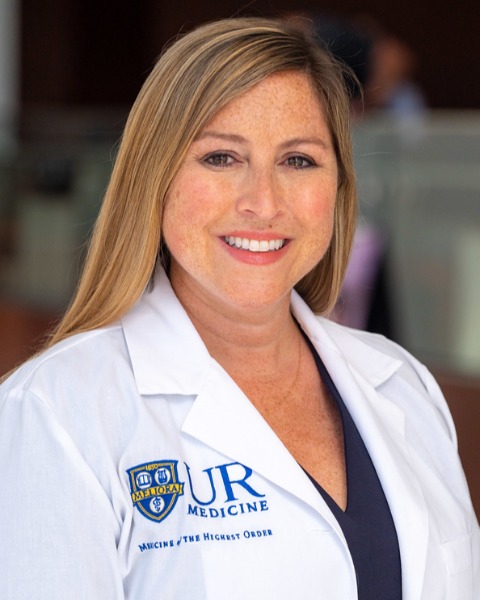Breast
E43: Biology is Queen: 21 gene recurrence score has stronger prognostic ability than lymph node burden

Chelsea Marin, MD
Resident
Department of Surgery, University of Rochester Medical Center
Rochester, New York, United States
Chelsea Marin, MD
Resident
Department of Surgery, University of Rochester Medical Center
Rochester, New York, United States
Chelsea Marin, MD
Resident
Department of Surgery, University of Rochester Medical Center
Rochester, New York, United States- ZC
Zijing Cheng, MS
PhD Candidate
Division of Health Policy and Outcomes Research, Department of Public Health Sciences, University of Rochester School of Medicine and Dentistry, United States - YL
Yue Li, PhD
Professor
Division of Health Policy and Outcomes Research, Department of Public Health Sciences, University of Rochester Medical Center, United States - JG
Jessica C. Gooch, MD (she/her/hers)
Assistant Professor
Division of Surgical Oncology, Department of Surgery, University of Rochester Medical Center
Rochester, New York, United States - AD
Ajay Dhakal, MBBS
Assistant Professor
Department of Medicine, University of Rochester Medical Center, United States - KG
Kimberly R. Gergelis, MD
Assistant Professor
Department of Radiation Oncology, University of Rochester Medical Center, Wilmot Cancer Institute, United States - RO
Ruth O'Regan, MD
Professor
Department of Medicine, University of Rochester Medical Center, United States 
Anna Weiss, MD
Associate Professor
Division of Surgical Oncology, Department of Surgery, University of Rochester Medical Center, United States
ePoster Abstract Author(s)
Submitter(s)
Author(s)
Breast cancer treatment is increasingly based on biologic factors, less so anatomic. Despite this, some decisions still rely on anatomic factors such as chemotherapy administration based on the number of involved axillary lymph nodes (LNs). The objective of this study is to determine whether 21 gene recurrence score (RS) or the number of involved LNs is a stronger predictor of overall survival (OS) for breast cancer patients.
Methods:
The National Cancer Database was queried for patients with hormone receptor-positive (HR+, defined as estrogen and/or progesterone receptor positivity), cT1-4 N0-3 M0 breast cancer between the years 2018-2020 when RS information was available in the database. We summarized clinical characteristics of the cohort, performed a linear regression for factors related to pathologic node-positive disease, used Cox regression to determine the impact of RS (as a binary variable, ≤25 vs. >25) and number of pathologic positive nodes (as a continuous variable) on OS, estimated OS via Kaplan Meier curves, and used log-rank tests to compare OS among different risk categories.
Results:
A total of 317,298 patients met study criteria. The median age was 64 years (range 18-90 years). Most patients had grade 2 (47.8%, n=152,575), cT1 (75.3%, n=239,056), cN0 (92.5%, n=293,514) breast cancers, and 14.1% (n=44,808) had lymphovascular invasion. Approximately two-thirds (66.9%, n=212,154) underwent lumpectomy and 84.3% (n=267,445) underwent sentinel LN biopsy (SLNB). The median number of pathologic positive LNs was 0 (range 0-66). RS were available in 42.5% of patients (n=134,930), of which 85.3% (n=115,045) were ≤25, and 14.7% (n=19,895) were >25. Lymphovascular invasion (slope coefficient 0.78, p< 0.001), performance of an axillary LN dissection (ALND [1.31, p< 0.001]), and increasing cN category (cN1 2.23, cN2 3.69, and cN3 5.20, all p< 0.001) were associated with pathologic node-positive disease. By Cox regression, RS >25 (HR 1.59, p< 0.001) and pathologic node-positive disease (HR 1.05, p< 0.001) led to worse OS. By Kaplan Meier estimates, OS was numerically worse across all risk groups of patients who received an ALND vs. SLNB (Figure 1).
Conclusions:
In this large national dataset, RS results had a greater impact on OS than the presence of lymph node metastases. This information suggests that genomic assays may be more impactful than the number of involved LNs when considering treatment options, and quantifying LN burden by ALND may not always be necessary.
Learning Objectives:
- determine whether 21 gene recurrence score or the number of involved lymph nodes is a stronger predictor of overall survival for breast cancer patients.
- discuss overall survival in different breast cancer risk groups based on type of axillary surgery
- list factors associated with pathologic lymph node-positive breast cancer
